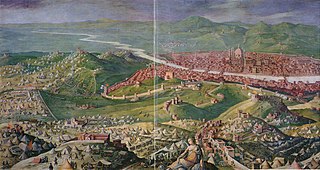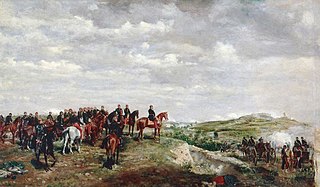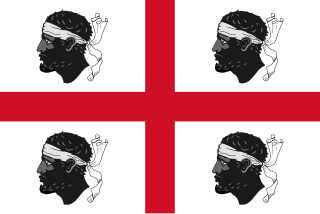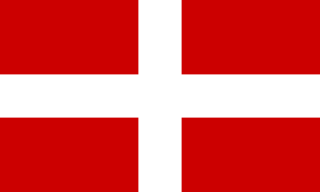
The War of the Austrian Succession was a European conflict fought between 1740 and 1748, primarily in Central Europe, the Austrian Netherlands, Italy, the Atlantic Ocean and Mediterranean Sea. Related conflicts include King George's War in North America, the War of Jenkins' Ear, the First Carnatic War, and the First and Second Silesian Wars.

Charles Emmanuel III was Duke of Savoy, King of Sardinia and ruler of the Savoyard states from 3 September 1730 until his death in 1773. He was the paternal grandfather of the last three mainline Kings of Sardinia.

Victor Emmanuel I was the Duke of Savoy, King of Sardinia and ruler of the Savoyard states from 4 June 1802 until his reign ended in 1821 upon abdication due to a liberal revolution. Shortly thereafter, his brother Charles Felix ascended the throne as the new King of Sardinia. Victor Emmanuel was the son of King Victor Amadeus III of Sardinia and his wife, Maria Antonia Ferdinanda of Spain. In 1789, he married Maria Theresa of Austria-Este, with whom he had seven children, including the future Empress of Austria. He was the King of Sardinia during the Napoleonic Wars, where he regained Piedmont after Napoleon's defeat in 1814.

The Duchy of Parma and Piacenza was an Italian state created in 1545 and located in northern Italy, in the current region of Emilia-Romagna.

The history of early modern Italy roughly corresponds to the period from the Renaissance to the Congress of Vienna in 1814. The following period was characterized by political and social unrest which then led to the unification of Italy, which culminated in 1861 with the proclamation of the Kingdom of Italy.

The War of the League of Cognac (1526–30) was fought between the Habsburg dominions of Charles V—primarily the Holy Roman Empire and Spain—and the League of Cognac, an alliance including the Kingdom of France, Pope Clement VII, the Republic of Venice, the Kingdom of England, the Duchy of Milan, and the Republic of Florence.

The Second Italian War of Independence, also called the Sardinian War, the Austro-Sardinian War, the Franco-Austrian War, or the Italian War of 1859, was fought by the Second French Empire and the Kingdom of Sardinia against the Austrian Empire in 1859 and played a crucial part in the process of Italian Unification.

The Battle of Piacenza was fought between a Franco-Spanish army and the Austrian army near Piacenza, in Northern Italy on June 16, 1746. It formed part of later operations in the War of the Austrian Succession. The result was a victory for the Austrian forces, led by Prince Josef Wenzel.
The siege of Villafranca took place between 14 and 27 April 1744, during the War of the Austrian Succession. The armies of Spain and France advancing towards the Kingdom of Sardinia and attacked the entrenched positions in the Villafranca pass, defended by Anglo-Sardinian forces. The Franco-Spanish attacks were not very successful, but the defenders, due to the high losses suffered during the attacks, were forced to abandon the port of Villafranca with a large part of their forces. The small garrison that remained in the place surrendered on 27 April.
The Battle of Madonna dell'Olmo or Battle of Cuneo was fought on the outskirts of Cuneo on 30 September 1744, in the War of the Austrian Succession. The battle ended in a victory for the armies of Spain and France over the Kingdom of Sardinia but it did not advance the victors' campaign.

The Battle of Assietta was a significant engagement of the War of the Austrian Succession and pitted a numerically superior French force of 25,000 men under the command of Louis Fouquet, Chevalier de Belle-Isle against a Sardinian army of 15,000 men led by Giovanni Bricherasio. The French were soundly defeated and their commander, Belle-Isle, killed during the course of the battle. The siege was part of the Italian campaign of the War of the Austrian Succession, in which Habsburgs and Bourbons contested for domination over Northern Italy and the various Italian states. The Kingdom of Sardinia joined the war on the side of the Pragmatic Allies in 1742 and rallied itself to Maria Theresa's cause. There also were concerns about growing French influence in its territories. The war in Italy had already been going on for seven years, and the Sardinian army had already suffered several defeats in the field, leading to them opting for a more defensive approach. The French led several expeditions in Italy during the war, combining their forces with the Spanish Bourbons to accomplish their political aims.

Jean Bonaventure Thierry du Mont, 1st Count of Gages, Viceroy of Navarre, 1746–1753, a Knight of the Order of the Golden Fleece in 1745, was a Walloon born Spanish General who was awarded by King Philip V of Spain in 1745 the title of "Conde", "Count", of Gages, a village near Brugelette in Hainaut.

The Kingdom of Sardinia, also referred to as the Kingdom ofSardinia-Piedmont or Piedmont-Sardinia as a composite state during the Savoyard period, was a country in Southern Europe from the late 13th until the mid-19th century.
The Battle of Landriano took place on 21 June 1529, between the French army under Francis de Bourbon, Comte de St. Pol and the Imperial–Spanish army commanded by Don Antonio de Leyva, Duke of Terranova in the context of the War of the League of Cognac. The French army was destroyed and the battle's strategic result was that the struggle between Francis I of France and Charles V, Holy Roman Emperor for control of northern Italy was temporarily at an end.

The Cittadella of Alessandria is a star fort and citadel in the city of Alessandria, Italy. It was built in the 18th century by the Kingdom of Sardinia, and today it is one of the best preserved fortifications of that era. It is one of the few fortifications in Europe still in their original environment, since there are no buildings blocking the views of the ramparts, or a road that surrounds the ditches.

The 1st Regiment "Granatieri di Sardegna" is an active unit of the Italian Army based in Rome in Lazio. The regiment is part of the army's infantry arm's Granatieri (Grenadiers) speciality and assigned to the Mechanized Brigade "Granatieri di Sardegna". Formed in 1659 the regiment is the currently oldest active unit of the Italian Army and the most senior regiment in the Italian Army's infantry order of precedence. Together with its sister the regiment, the 2nd Regiment "Granatieri di Sardegna", the regiment is the guard regiment of Rome.

The Regiment "Savoia Cavalleria" (3rd) is a cavalry unit of the Italian Army based in Grosseto in Tuscany. The regiment is the reconnaissance unit of the Paratroopers Brigade "Folgore".

The Treaty of Nymphenburg was a treaty between Bavaria and Spain that was concluded on May 28, 1741 at the Nymphenburg Palace in Munich. It was the first formal pact of a series of French-sponsored alliances against the Habsburg Monarch, Maria Theresa. Through the agreement, the Bavarian Elector Charles Albert gained the support of King Philip V of Spain to become the next Holy Roman Emperor against the claims of the Habsburgs. The treaty was brokered by Marshal Belleisle under the authority of Louis XV of France. As part of the negotiations, the French agreed to materially support Charles Albert's claims. The treaty signaled the expansion of the First Silesian War, which started as a local war between Prussia and the Habsburg Monarchy, into the War of the Austrian Succession, a pan-European conflict.

The Kingdom of Sardinia is a term used to denote the Savoyard state from 1720 until 1861, which united the island of Sardinia with the mainland possessions of the House of Savoy. Before 1847, only the island of Sardinia proper was part of the Kingdom of Sardinia, while the other mainland possessions were held by the Savoys in their own right, hence forming a composite monarchy and a personal union which was formally referred to as the "States of His Majesty the King of Sardinia". This situation was changed by the Perfect Fusion act of 1847, which created a unitary kingdom. Due to the fact that Piedmont was the seat of power and prominent part of the entity, the state is also referred to as Sardinia-Piedmont or Piedmont-Sardinia and sometimes erroneously as the Kingdom of Piedmont.
















